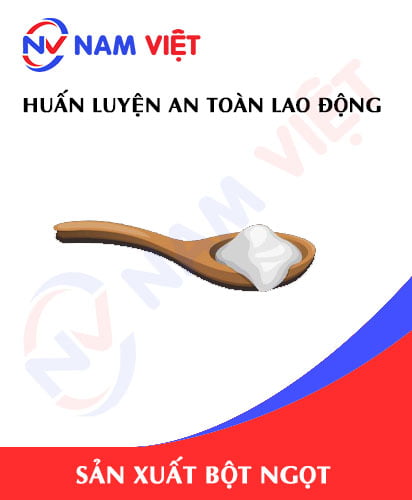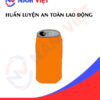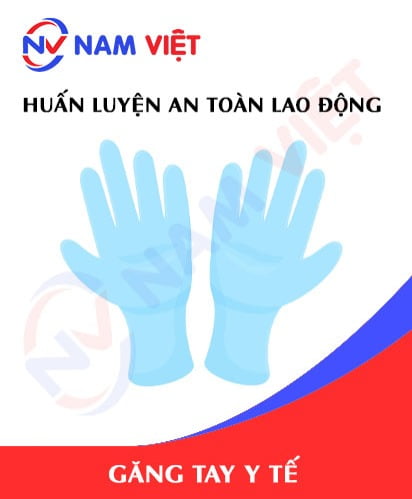Occupational Safety Training in Monosodium Glutamate Manufacturing
99,000 ₫
Note: The above price is calculated for one person, the price may fluctuate depending on the number of trainees participating in the course and the dynamics of the market. For more accurate price support, please refer to the quotation table or contact our consulting staff directly.
Occupational safety is an important issue in monosodium glutamate manufacturing factories and needs to be addressed promptly to ensure the health and safety of workers, as well as to enhance the reputation of businesses. The Occupational safety training course is one of the effective solutions to raise awareness of accident prevention for workers participating in monosodium glutamate production.
Table of Contents
Toggle1. Overview of Monosodium Glutamate
a. What is monosodium glutamate?
- Monosodium glutamate (MSG) is a type of food additive used to enhance sweet flavors in food and beverages. MSG is usually made from ingredients such as sugar, glucose, fructose, dextrin, maltodextrin, sucralose, aspartame, acesulfame-K, stevia, and other flavor compounds. MSG has many applications in industrial food manufacturing, especially in products with low or no sugar content. However, excessive use of MSG can be harmful to health, so it should be used in a balanced and reasonable manner.
- The MSG manufacturing sector in Vietnam is currently developing strongly. According to the report of the Department of Agriculture and Rural Development, Vietnam’s MSG production in 2020 reached over 300,000 tons, doubling compared to 2015. MSG manufacturing companies in Vietnam have different scales and production technologies, serving domestic consumption and export demands. However, this sector also faces challenges regarding product quality, food safety, and competition with imported MSG products.

b. Machinery used in MSG manufacturing
The machinery used in MSG manufacturing includes:
- Mixing machine: a machine used to dissolve MSG granules and spice mixtures, making the powder finer and more uniform.
- Blending machine: a machine used to mix MSG ingredients together. Components include sugar, salt, flavor enhancers, spice mixtures, and other additives.
- Drying machine: a machine used to remove moisture from MSG. After thorough mixing, the powder is placed into the drying machine to achieve suitable moisture content and easy storage.
- Packaging machine: a machine used to pack MSG into bags or containers for convenient use and storage. Packaging machines are often combined with automatic bagging systems to increase productivity and minimize human error.
- Quality control system: a system designed to check MSG quality during manufacturing and packaging. This includes devices for measuring moisture, powder fineness, pH, and other components to ensure product quality.

c. Typical MSG manufacturing companies
Currently, the Vietnamese market has many MSG manufacturing companies. Some typical companies include:
- Ajinomoto Vietnam: A Japanese company that has been present in Vietnam since 1991 and is one of the largest MSG manufacturers in Vietnam.
- Vedan Vietnam Enterprise Corp. Ltd.: A Taiwanese company specializing in flavor products, including MSG. Vedan was established in Vietnam in 1991.
- Masan Consumer Corporation: A Vietnamese company established in 2011, producing MSG products under the “Nam Ngu” brand.
- Nestlé Vietnam: A Swiss company operating in Vietnam since 1995, producing MSG under the “Maggi” brand.
d. Specific jobs in MSG manufacturing factory
Group 1
- CEO, deputy CEO, and department heads in the MSG manufacturing factory.
Group 2
- Safety officers: manage safety in the factory, design safety procedures, supervise and ensure employees follow safe working procedures.
Group 3
- Raw material preparation: Ingredients such as sugar, salt, glutamic acid, aspartic acid, citric acid, flavorings are prepared and treated before the manufacturing process.
- Blending: Ingredients are blended in correct proportions to create MSG mixtures.
- Cooking: The mixture is cooked in a heating tank to dissolve and produce MSG.
- Cleaning and filtering: After production, MSG is cleaned and filtered to remove impurities and improve product quality.
- Packaging: MSG, after production and quality control, is packaged into suitable containers to protect against moisture, discoloration, or damage.
- Quality inspection: Samples are taken from production for testing to ensure compliance with required standards.
- Maintenance, repair, and cleaning of machinery and equipment: To ensure continuous production and high-quality products, employees regularly maintain, repair, and clean factory machinery and equipment.
Group 4
- Office, service, sales, and marketing tasks.
- Production management, quality management, human resources management, material management, financial accounting management.
- Design of safe manufacturing processes, research, and development of new product technologies.

2. Overview of occupational safety training in MSG manufacturing
In this article, we focus on issues related to Group 3, because Group 3 directly participates in the manufacturing process and faces the highest occupational safety risks. For reference to other groups, see here
a. What is Group 3 occupational safety training?
- Group 3 occupational safety training is a program designed to raise awareness among workers on how to prevent occupational accidents.
- The training helps workers recognize and avoid hazards, reducing the risk of occupational accidents during work.
REGISTER FOR OCCUPATIONAL SAFETY TRAINING SERVICE
b. Training duration
Initial safety training
- Total training duration is at least 24 hours, including examination time.
- 8 hours of theory on policies and occupational safety laws
- 8 hours of theory on basic occupational safety knowledge
- 4 hours of theory on specialized training content
- 2 hours of practical training on specialized content
- 2 hours of theoretical test at the end of the course
The safety training center distributes time over multiple sessions depending on employees’ schedules. Typically, there are 6 sessions over 3 days, if the factory can arrange continuous training.
Periodic safety training
- Before the occupational safety card expires, workers who want reissuance must undergo periodic occupational safety training, with a duration of at least 50% of the initial training duration.
Explanation: The total periodic training duration is at least 12 hours, including examination. After completion and passing the test, workers will be reissued or extended their occupational safety card.
c. Training content
| No. | TRAINING CONTENT | TRAINING DURATION (HOURS) | |||
| Total | Including | ||||
| Theory | Practical | Test | |||
| I | Policies and occupational safety laws | 8 | 8 | 0 | 0 |
| 1 | Overview of legal documents system on occupational safety. | 6 | 6 | ||
| 2 | Standards and technical regulations on occupational safety. | 1 | 1 | ||
| 3 | Specific regulations by state management agencies regarding construction, expansion, or renovation of facilities, production, use, storage, and inspection of machinery, equipment, and materials with strict safety requirements. | 1 | 1 | ||
| II | Basic occupational safety knowledge | 8 | 8 | 0 | 0 |
| 1 | Basic knowledge of hazards and harmful factors in the workplace. | 4 | 4 | ||
| 2 | Methods to improve working conditions. | 1 | 1 | ||
| 3 | Safety culture in manufacturing and business. | 1 | 1 | ||
| 4 | Rights and responsibilities of employers and employees; occupational safety policies; roles of safety staff network. | 1 | 1 | ||
| 5 | Occupational safety rules, signage, use of protective equipment, first aid skills, occupational disease prevention. | 1 | 1 | ||
| III | Specialized training content | 6 | 4 | 2 | 0 |
| Comprehensive knowledge of machinery, equipment, hazardous substances; risk analysis, occupational safety management, safe working procedures with machinery and hazardous substances. | 6 | 4 | 2 | ||
| IV | Final occupational safety test | 2 | 2 | 0 | 0 |
| Total | 24 | 22 | 2 | ||
See more training content of 6 groups
d. Occupational safety card
After completing the occupational safety training and passing the test, workers will be issued a Group 3 occupational safety card (commonly called Group 3 occupational safety certificate).
The Group 3 card displays information such as full name, date of birth, specific job and workplace, training duration, red seal, and signature confirming completion.
According to issuance regulations in Clause 2 of Article 24 of Decree 44/2016/ND-CP, there are two cases:
- If the employer and employee have a labor contract, the employer must stamp and sign the safety card for Group 3 workers after completion of training from An Toan Nam Viet and passing the test.
- If the worker is freelance or temporary, without a labor contract, the training unit must stamp and sign the safety card after the worker completes training from An Toan Nam Viet and passes the test.

3. Identifying Hazards in Monosodium Glutamate Manufacturing
Some hazards that may occur during monosodium glutamate manufacturing include:
- Monosodium glutamate can cause fire or explosion if not stored and transported properly. Chemicals used in the manufacturing process can also be flammable or explosive.
- Ingredients and mixtures of monosodium glutamate during cooking can cause burns or scalding due to melting or hot materials.
- Chemicals used in manufacturing such as glutamic acid, aspartic acid, citric acid may cause chemical poisoning if not used correctly.
- Manufacturing monosodium glutamate can cause environmental pollution, especially during water treatment and consumption.
- Workers involved in monosodium glutamate manufacturing may be affected if occupational safety and environmental hygiene are not ensured.
4. Common Occupational Accidents in Monosodium Glutamate Manufacturing
Common occupational accidents in monosodium glutamate manufacturing include:
- Burns or scalds: Due to cooking, mixing, and handling, hot or molten materials may spill. Workers need to wear protective gear and ensure safety while performing these tasks.
- Chemical poisoning: Using chemicals such as glutamic acid, aspartic acid, citric acid, sodium glutamate improperly may lead to chemical poisoning.
- Fire and explosion: Ingredients and monosodium glutamate mixtures can cause fire or explosion if not stored and transported properly. Chemicals used can also be flammable or explosive.
- Electrical accidents: If electrical equipment in the factory is not regularly maintained, insufficiently insulated, or waterproofed, it can pose a risk of electric shock to workers.
- Transportation accidents: During transport from the factory to warehouse or retail points, traffic accidents may occur causing product loss or injury to drivers and others.
5. Safety Measures for Participating in Monosodium Glutamate Manufacturing
To ensure worker safety during monosodium glutamate manufacturing, the following safety measures should be applied:
- All workers must be provided with full personal protective equipment such as safety glasses, gas masks, protective gloves, safety shoes, etc., to ensure health safety.
- Workers must be trained in the manufacturing process and strictly follow procedures to ensure product safety and their own and consumers’ health.
- Excessive or poor-quality chemical use can cause poisoning and affect users’ health.
- Workers must be trained on how to use safety equipment properly to ensure product and personal safety.
- Manufacturing equipment must be regularly inspected and maintained to ensure optimal operation and reduce risks during production.
- Workers must keep the manufacturing environment clean and hygienic to minimize health risks.
- Monosodium glutamate factories must have a full fire prevention plan to address the risk of fire or explosion during manufacturing.
- Workers must be trained in occupational safety and environmental hygiene to ensure safety for themselves and others.
- Periodically conduct workplace environmental monitoring in factories, collecting and analyzing harmful factors for workers, and adjusting to reduce hazards to prevent occupational diseases.

6. Benefits of Occupational Safety Training in Monosodium Glutamate Manufacturing
An Toan Nam Viet provides enterprises with the following benefits upon completing occupational safety training courses according to Decree 44/2016/ND – CP on Occupational Safety and Hygiene for companies, factories, and enterprises.
- Workers can recognize potential occupational hazards and take preventive measures to avoid accidents.
- Enterprises can establish risk prevention measures in manufacturing, operation, and maintenance processes.
- Reduce costs associated with occupational safety risks.
- Uninterrupted manufacturing increases labor productivity and product quality.
- Compliance with occupational safety laws, avoiding legal risks.
- Create credibility and professionalism in all aspects, enhancing the enterprise’s brand value.
An Toan Nam Viet training courses are designed to prevent external hazards from affecting individuals, helping them avoid dangers that may lead to injuries or, in serious cases, death.
REGISTER FOR OCCUPATIONAL SAFETY TRAINING SERVICE
7. Customer Feedback after Completing Occupational Safety Training in Monosodium Glutamate Manufacturing
An Toan Nam Viet has years of experience accompanying many enterprises in Vietnam in general and in southern provinces in particular. This responsibility is extremely valuable to Nam Viet, which is why our Occupational Safety Training has become increasingly professional. The growth of An Toan Nam Viet comes from positive feedback and suggestions from enterprises. Below are feedback from partners we have served.
Bac Nam E&C Investment and Construction Joint Stock Company
“The first time I used the service at An Toan Nam Viet, I was impressed by the 24/7 support from the consulting team. The class organization was very fast and convenient for our company. Thank you very much for Nam Viet’s service!”
Hoa Dat Construction and Trading Joint Stock Company
“Nam Viet’s service helped us greatly in simplifying occupational safety and completing safety documents for our work process. The consulting team responded promptly to our questions. Five stars for Nam Viet.”
See more customer interviews after using the service of An Toan Nam Viet
8. Occupational Safety Training Capacity of An Toan Nam Viet
An Toan Nam Viet is a reputable and high-quality occupational safety training center in Vietnam today. Our occupational safety training sessions are continuously conducted at factories, manufacturing workshops, or construction sites nationwide (all 63 provinces of Vietnam).
REGISTER FOR OCCUPATIONAL SAFETY TRAINING SERVICE
Occupational Safety Training License
- An Toan Nam Viet has been inspected and certified by the Department of Safety under the Ministry of Labor – Invalids and Social Affairs, granting a certificate of eligibility for occupational safety and hygiene training. This further strengthens our capacity in occupational safety training.

Training Materials and Lectures
- Before being used in occupational safety training courses, all training materials are reviewed to ensure lectures are accurate and effective when applied.
- Our instructors’ teaching methods follow the standardized methodology of An Toan Nam Viet, developed by experts in occupational safety and hygiene training to maximize knowledge absorption for trainees.
Facilities
- Controlling classroom factors affecting training enhances teaching efficiency and knowledge absorption for trainees.
- Our training facilities provide spacious classrooms that meet standards for area, lighting, training equipment, etc.
9. Nationwide Reputable Occupational Safety Training Center
At An Toan Nam Viet, we prioritize professional dedication in occupational safety training. For us, imparting self-protection knowledge to workers so they are equipped for a safe livelihood is a contribution to national development.
To ensure effective training, we meticulously prepare every detail, from tools, teaching equipment, curricula, materials, to sound and lighting systems.
Our occupational safety instructors are experts with many years of experience. They even have research works identifying hazards across industries and ways to prevent them.
Lectures are derived from real-world practice and delivered vividly, making it easy for workers to understand. These factors create a comfortable learning environment and ensure effective knowledge absorption. All teachings strictly comply with Decree 44/2016/ND-CP.
This enables workers to understand multiple hazard prevention measures and self-protection methods, which they can apply appropriately in real work situations.
Our training center proudly provides reputable and professional occupational safety training services with the following advantages:
- Competitive training costs while maintaining training quality.
- Flexible training schedules to suit the company’s manufacturing operations.
- Quick certification procedures in compliance with legal regulations.
- Experienced instructors with many years in the field.
- Classroom conditions are controlled to optimize teaching efficiency and trainees’ knowledge absorption.
- Lectures are tailored to occupational safety requirements in enterprises.
- An Toan Nam Viet works dedicatedly and professionally to provide accurate and fast support to clients.

10. Additional References for Occupational Safety Training in Monosodium Glutamate Manufacturing
- Occupational Safety Training Materials for Monosodium Glutamate (MSG) Manufacturing
- Complete Occupational Safety Training Materials
- Occupational Safety Training Test Sets
- Occupational Safety Multiple-Choice Tests for MSG Manufacturing
- Slides for Occupational Safety Training in MSG Manufacturing
1 review for Occupational Safety Training in Monosodium Glutamate Manufacturing
No comments yet















namchinh.haiphong341
Chi phí hợp lý mà uy tín lắm